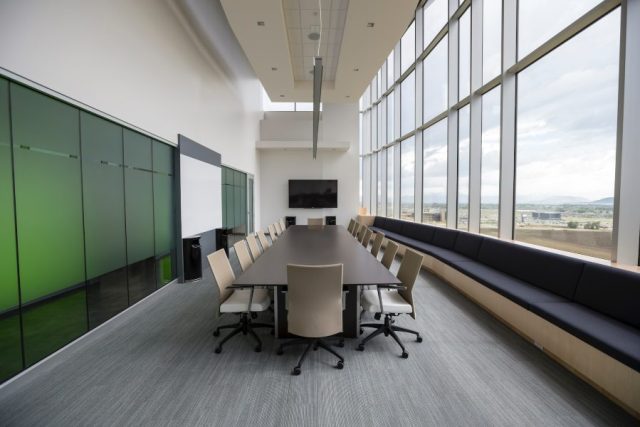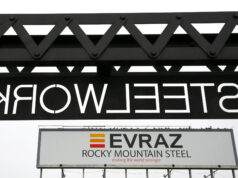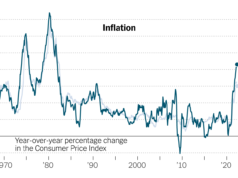A comprehensive business property maintenance plan is crucial to any successful business. It involves establishing a systematic approach to the upkeep and maintenance of a company’s physical assets, such as buildings, landscaping, and equipment. This plan is instrumental in preserving the property’s aesthetic appeal, ensuring the safety and comfort of employees and visitors, and prolonging the lifespan of the assets. Furthermore, a well-implemented maintenance plan can save the business from unforeseen repair costs and contribute to its profitability in the long run. This document will guide you through establishing a comprehensive business property maintenance plan.
1. Have Professionals Inspect Your Property
The initial step in establishing a maintenance plan is to have professionals thoroughly inspect your property. This includes architects, structural engineers, or certified building inspectors with knowledge and experience. They can identify potential issues that might not be evident to the untrained eye, from structural faults to minor wear and tear that could escalate into significant problems if unattended.
Inspections conducted by professionals ensure the property’s safety and structural integrity and provide a blueprint for your maintenance plan. It helps in prioritizing tasks, scheduling regular check-ups, and budgeting for preventative measures and repairs. The roofers at Gold Star Roofing can provide thorough roof inspections and repair services for commercial properties. By identifying potential problems early, you can prevent costly repairs and potential downtime in the future.
2. Identify Critical Areas Of Maintenance
Identifying critical maintenance areas is important in your comprehensive business property maintenance plan. This involves recognizing the key assets that require regular maintenance and attention. These could range from HVAC, plumbing, and electrical systems to exterior components like roofing and landscaping. Each of these areas plays a crucial role in your business property’s functionality, safety, and visual appeal.
To identify these critical areas, consider factors such as the assets’ age, frequency of use, and importance in your daily operations. For instance, a manufacturing unit would prioritize the maintenance of its machinery, while an office building might focus more on HVAC systems or elevators. Regular maintenance of these critical areas ensures their optimal performance and significantly extends their lifespan, saving your business from expensive replacements.
3. Set Up Schedules For Maintenance
Once you identify the critical areas of your business property, setting up maintenance schedules is essential. Establishing a schedule ensures that tasks are done regularly and on time. This could involve scheduling daily checks for workplace safety hazards or monthly inspections of HVAC systems. It also ensures that any minor problems discovered during regular check-ups can be addressed before they become major headaches.
Having a detailed schedule also helps in keeping track of maintenance activities and budgets, which is essential for the success of your comprehensive business property maintenance plan. You can use digital tools such as Property Meld to streamline property maintenance workflows and easily track tasks. It also provides access to service providers with verified reviews, enabling you to find reliable contractors for your maintenance needs.
4. Create A Budget For Maintenance
Creating a budget for maintenance is an important step in your comprehensive business property maintenance plan. This involves estimating the costs of maintaining each asset on your property, from labor to materials and equipment. Allotting individual budgets allows you to prioritize tasks based on urgency and cost-effectiveness. It also helps in keeping track of expenses and preventing overspending.
Apart from the cost of regular maintenance, you must also factor in costs for emergency repairs or unexpected replacements. Consider setting aside a contingency fund to cover these unforeseen expenditures. Additionally, budgeting for preventive maintenance can reduce long-term repair costs and ensure sustained functionality of your business property assets.
5. Gather All Necessary Supplies For Cleaning And Repair
Keeping a clean and well-maintained space looks great and promotes personal health and productivity. Thus, a supply list for cleaning and repair tasks should be an integral part of your comprehensive business property maintenance plan. This should include everything from the necessary tools and materials to safety gear like goggles or gloves. Having a backup of all essential supplies in emergencies is also important.
Having the right supplies for the job helps ensure tasks are done quickly and efficiently. You can find all your cleaning and repair needs at a store like The Home Depot, which has an extensive selection of products for both residential and commercial properties.
6. Come Up With a Comprehensive Plan for Pest Control
Pests such as rodents, insects, and birds can cause serious damage to business properties. To ensure that your property is safe from infestations, it is important to have a comprehensive pest control plan in place. This could involve sealing off possible entry points for pests, conducting regular inspections for signs of infestation, and setting traps or using pesticides if necessary.
In addition, it is important to establish a schedule for pest control treatments. This helps keep up with the latest trends in pest control and ensures that your business property remains protected from infestations. Professional pest control services such as Terminix bring decades of experience to the table and can provide customized solutions tailored to the specific needs of your business property.
7. Establish Rules and Protocols for Handling Emergencies On-Site
On-site emergencies range from minor incidents to major mishaps like electrical fires, plumbing leaks, or structural failures. Clearly defined rules and protocols ensure efficient and appropriate handling of these situations, minimizing damage and harm. Identify potential risks and develop effective procedures, including evacuation plans for fires, first aid kits for injuries, and emergency contacts for service providers.
Furthermore, all employees and tenants must be familiar with these protocols. Regular training sessions help ensure everyone understands their role in an emergency and how to respond effectively. This might involve conducting fire drills, first-aid training, or workshops on handling different emergencies. It’s also beneficial to have clear signage around the property outlining emergency escape routes and locations of emergency equipment. Keeping these protocols readily accessible and top of mind can make a significant difference when faced with an unexpected situation.
These are just some steps to create a comprehensive business property maintenance plan. Following these steps ensures that your property remains in top condition, which is essential for the success of your business. A comprehensive plan also helps you save money and time by preventing costly repairs or replacements. By taking proactive measures to protect your property assets, you can rest assured that your business remains safe and secure in the long run.














